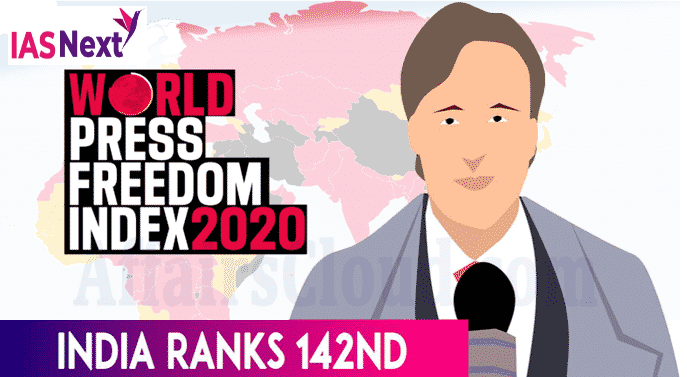CURRENT AFFAIRS
Get the most updated and recent current affair content on Padhaikaro.com
Centre disagrees with India’s rank on World Press Freedom Index
- IAS NEXT, Lucknow
- 24, Dec 2021

Reference News-
The Centre has disagreed with India’s low rank on the World Press Freedom Index prepared by media watchdog Reporters Without Borders.
What’s the issue?
The government claimed that the report was based on a small sample size and gave little or no importance to the “fundamentals of democracy”.
India’s ranking in the index and the cause for concern:
In March, Reporters Without Borders had said that India ranked 142 out of 180 countries when it comes to press freedom.
- It had added that the nation was classified as “bad” for journalism.
- It had said that India was among the five most dangerous nations in terms of journalists killed across the world this year.
- Also, the report had a “questionable methodology” for the survey. It lacked a clear definition of press freedom.
World Press Freedom Index 2021- Highlights:
- Norway topped the index for the fifth year in a row.
- The report labelled 132 countries as “very bad”, “bad” or “problematic”.
- It stated that the pandemic was used as means to deny journalists this access and promote government sponsored propaganda regarding the Covid-19 outbreak.
Performance of India and neighbours:
- India remained at the 142nd position among 180 countries.
- India was ranked in the “bad” category, along with Brazil, Mexico and Russia.
- The report says India is one of the world’s most dangerous countries for journalists trying to do their job properly.
- In 2016, India’s rank was 133, which has steadily climbed down to 142 in 2020.
- India drew flak for “extremely violent social media hate campaigns” against journalists who “dare to criticise” the government.
- In south Asia, Nepal was placed 106, Sri Lanka 127, Myanmar 140, Pakistan 145 and Bangladesh at the 152nd spot. China was ranked 177, and the US 44.
About World Press Freedom Index:
- Published annually by Reporters Without Borders since 2002, the World Press Freedom Index measures the level of media freedom in 180 countries.
- It is based on an evaluation of media freedom that measures pluralism, media independence, the quality of the legal framework and the safety of journalists.
- It also includes indicators of the level of media freedom violations in each region.
- It is compiled by means of a questionnaire in 20 languages that is completed by experts all over the world. This qualitative analysis is combined with quantitative data on abuses and acts of violence against journalists during the period evaluated.